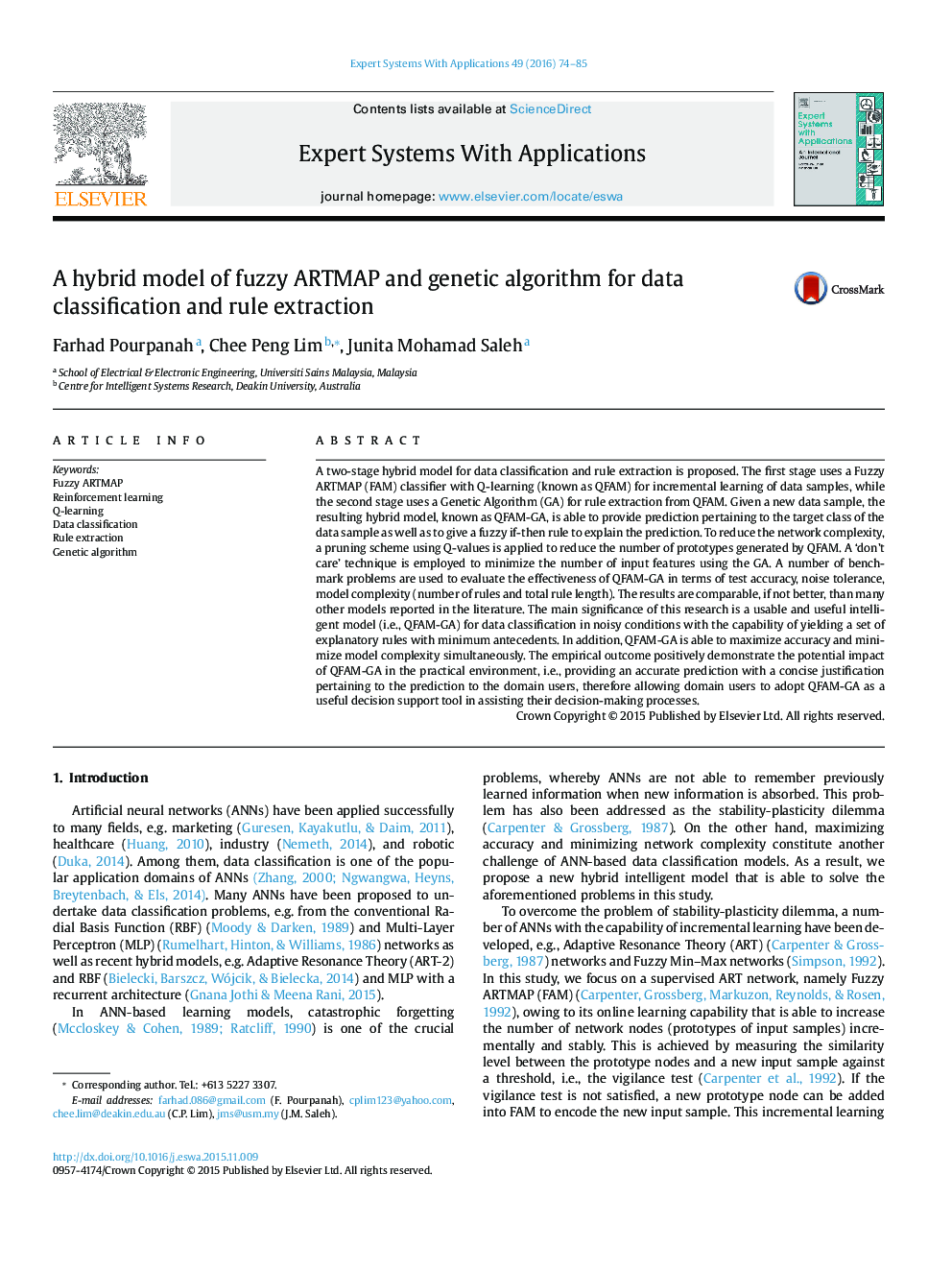| کد مقاله | کد نشریه | سال انتشار | مقاله انگلیسی | نسخه تمام متن |
|---|---|---|---|---|
| 382194 | 660744 | 2016 | 12 صفحه PDF | دانلود رایگان |

• A hybrid model (QFAM-GA) for data classification and rule extraction is proposed.
• Fuzzy ARTMAP (FAM) with Q-learning is first used for incremental learning of data.
• A Genetic Algorithm (GA) is then used for feature selection and rule extraction.
• Pruning is used to reduce the network complexity and to facilitate rule extraction.
• The results show QFAM-GA can provide useful if-then rule to explain its predictions.
A two-stage hybrid model for data classification and rule extraction is proposed. The first stage uses a Fuzzy ARTMAP (FAM) classifier with Q-learning (known as QFAM) for incremental learning of data samples, while the second stage uses a Genetic Algorithm (GA) for rule extraction from QFAM. Given a new data sample, the resulting hybrid model, known as QFAM-GA, is able to provide prediction pertaining to the target class of the data sample as well as to give a fuzzy if-then rule to explain the prediction. To reduce the network complexity, a pruning scheme using Q-values is applied to reduce the number of prototypes generated by QFAM. A ‘don't care’ technique is employed to minimize the number of input features using the GA. A number of benchmark problems are used to evaluate the effectiveness of QFAM-GA in terms of test accuracy, noise tolerance, model complexity (number of rules and total rule length). The results are comparable, if not better, than many other models reported in the literature. The main significance of this research is a usable and useful intelligent model (i.e., QFAM-GA) for data classification in noisy conditions with the capability of yielding a set of explanatory rules with minimum antecedents. In addition, QFAM-GA is able to maximize accuracy and minimize model complexity simultaneously. The empirical outcome positively demonstrate the potential impact of QFAM-GA in the practical environment, i.e., providing an accurate prediction with a concise justification pertaining to the prediction to the domain users, therefore allowing domain users to adopt QFAM-GA as a useful decision support tool in assisting their decision-making processes.
Journal: Expert Systems with Applications - Volume 49, 1 May 2016, Pages 74–85